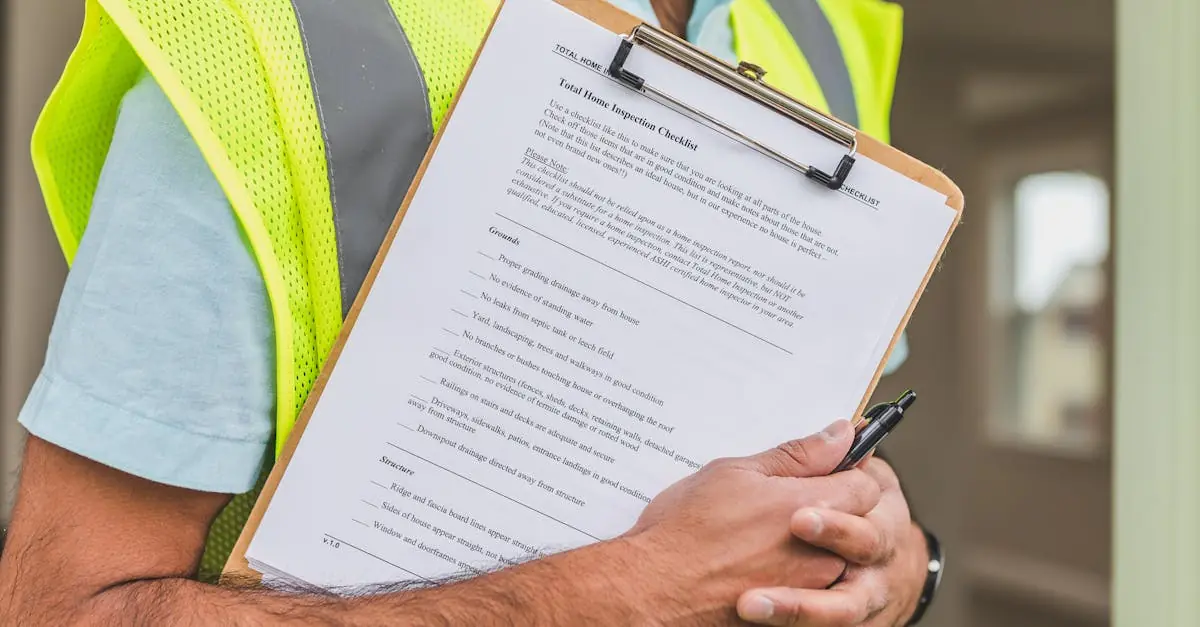Table of Contents
ToggleKeeping a zoo running smoothly is no walk in the park—unless you’re dodging a lion’s lunch! A well-maintained zoo ensures both animals and visitors have a safe and enjoyable experience. From cleaning habitats to checking equipment, every detail matters. After all, no one wants to witness a giraffe doing the cha-cha because of a slippery floor!
Importance Of Zoo Maintenance
Zoo maintenance plays a crucial role in ensuring a safe and enjoyable experience for both animals and visitors. Properly maintained facilities enhance habitat quality and visitor satisfaction.
Animal Welfare
Animal welfare remains a top priority in zoo operations. Clean habitats significantly affect animals’ physical health and emotional well-being. Regular inspections of enclosures prevent safety hazards, ensuring animals feel secure and comfortable. Adequate temperature control, ventilation, and enrichment activities help maintain natural behaviors and support species conservation efforts. Routine checks on feeding schedules guarantee proper nutrition, reducing stress and promoting positive interactions among animals.
Visitor Experience
Visitor experience directly correlates with zoo maintenance. Well-kept pathways and attractions invite exploration and education. Clean restrooms, adequate signage, and informative displays enhance enjoyment for all guests. Interactive exhibits require consistent upkeep to provide safe, engaging experiences. Ensuring the availability of amenities like food stands and seating areas contributes to a positive atmosphere, encouraging longer visits. Regular maintenance fosters a welcoming environment that promotes repeat attendance and word-of-mouth recommendations.
Key Components Of A Zoo Maintenance Checklist
A comprehensive zoo maintenance checklist ensures a safe, clean, and functional environment for animals and visitors. Several key components contribute to effective zoo operations.
Facility Upkeep
Regular checks on facilities contribute to overall safety. Inspect walkways for hazards like cracks or spills. Ensure lighting and signage remain adequate and visible. Monitor fences and gates for sturdiness to prevent escapes. Routine maintenance of restrooms and food areas enhances visitor experiences and satisfaction. Keeping waste areas clean reduces odors and pest attraction. All these measures impact both animal welfare and visitor enjoyment.
Animal Enclosures
Proper inspection of animal enclosures promotes safety and well-being. Evaluate structural integrity to prevent collapse or breaches. Provide adequate space specific to each species’ needs. Enrichment opportunities within enclosures aid animal health and behavior. Secure feeding and watering stations minimize contact between animals and visitors, ensuring hygiene. Review temperature controls to maintain appropriate conditions. Regular observations encourage swift identification of health issues or other concerns.
Hygiene Practices
Consistent hygiene practices play a critical role in animal health. Daily cleaning routines prevent the spread of disease among animals and humans. Use appropriate cleaning agents approved for animal habitats to ensure safety. Dispose of waste responsibly to deter pests and maintain cleanliness. Monitor the effectiveness of sanitization protocols in areas like kitchens and visitor facilities. Training staff on proper hygiene procedures reinforces the importance of cleanliness in a zoo setting. Keeping every area clean contributes to a positive experience for visitors and a healthy environment for animals.
Creating An Effective Zoo Maintenance Checklist
Developing a thorough zoo maintenance checklist requires attention to various needs. Different zoos present unique challenges and configurations, mandating customized approaches.
Customizing For Different Zoos
Each zoo varies in layout, animal species, and visitor demographics. Adapting checklists to reflect these differences ensures effective maintenance. Urban zoos might prioritize visitor pathways and accessibility, while wildlife sanctuaries may focus on natural habitats. Specific tasks can include monitoring native flora and fauna health and managing different animal care needs. Regular consultations with staff help identify additional requirements unique to each facility.
Frequency Of Maintenance Tasks
Setting a maintenance schedule enhances safety and cleanliness. Daily tasks might involve cleaning enclosures and checking water quality. Weekly inspections could include structural assessments of visitor areas and reviewing signage for clarity. Monthly routines should extend to checking lighting systems and performing deep cleans of food preparation areas. Annual evaluations should assess the overall integrity of habitats and facilities, aligning them with best practices for animal welfare and visitor experience. Consistency in these tasks drives operational efficiency and boosts both animal and visitor satisfaction.
Best Practices For Zoo Maintenance
Prioritizing effective zoo maintenance involves implementing best practices, ensuring a seamless experience for animals and visitors alike.
Staff Training
Staff training stands as a critical element in zoo maintenance. Employees should receive comprehensive training that emphasizes hygiene practices, safety protocols, and animal welfare standards. Regular workshops empower staff to stay updated on best practices, enhancing their ability to respond to emergencies effectively. Training sessions tailored for specific tasks, such as habitat cleaning and equipment checks, promote accountability and efficiency. Engaging staff in ongoing education strengthens their skills and knowledge, leading to improved maintenance efforts across the zoo.
Record Keeping
Accurate record keeping plays a vital role in successful zoo maintenance. Establishing a system for documenting maintenance activities enhances accountability. Maintenance logs should track tasks completed, equipment inspections, and any issues identified. This structured approach allows for trend analysis and identification of recurring problems in specific areas. Regularly reviewing records fosters informed decision-making, ultimately improving overall maintenance practices. Efficient record keeping ensures compliance with regulations and contributes to transparency, reassuring visitors about their safety and care within the zoo.
Conclusion
Maintaining a zoo is a multifaceted endeavor that requires diligence and attention to detail. A well-structured maintenance checklist not only safeguards animal welfare but also enhances the overall visitor experience. By prioritizing cleanliness safety and functionality zoos can create an environment that fosters both animal health and visitor enjoyment.
Regular inspections and proper staff training play crucial roles in ensuring that all maintenance tasks are completed efficiently. As each zoo presents its own unique challenges customizing the maintenance approach is essential for achieving optimal results. Ultimately a commitment to thorough maintenance practices reflects a zoo’s dedication to both its inhabitants and its guests.








